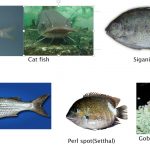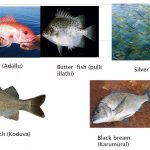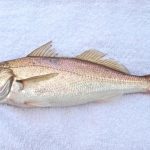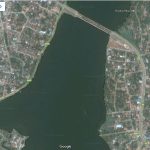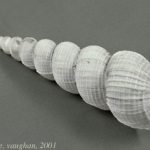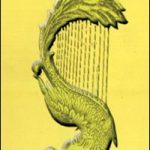Reveling the mystery of Batticaloa lagoon

According to Oxford dictionary the word mystery defined as “Something that is difficult or impossible to understand or explain”. So revealing it is to make it understandable or giving an acceptable explanation. The mystery mentioned here is the very special musical ability of Batticaloa lagoon which is iconic to Batticaloa.
The lagoon is 56 kilometers long which extends from Eravur (Batticaloa District) in the north to Kalmunai (Ampara District) in the south. To full fill the criteria of a lagoon it has to open into the sea. The Batticaloa lagoon has two narrow opening which is only about 200m wide. One of them is located in the southern end of the lagoon, it is two pronged, at Onthachimadam and Kallar and the other one is in the midway of the lagoon at Palameenmadu which is close to the Batticaloa town.
In history this phenomena is well documented including Encyclopedia Britanica. Proper documentation goes back to 1840’s. Local people are well aware this phenomenon even before that. In 1800s and early 19th century several people including Jesuit missionary were interested in researching. There were naturalist from Japan too visited to experience this phenomena. In parallel with international researchers, local scholar Swami Vipulanadar was also spend significant time with this phenomena. And it is evident in his works. And notable local veteran naturalist who did lot of investigation with experts from west is Mr S.V.O. Somanadar. Each and every occation the description of sound was almost similar.
Everyone involved in studying or observing this phenomena considred it as a very special phenomena because it comes from the water, and only audible on particular sites of the lagoon in a particular time of the day. And there were noted affinity towards full moon days also a sesonal variation is observed. More than everything, it was “musical”.
From the day of documentation in 1800s it was mention as musical. Sir James Emerson Tennent who arrived in 1845 and served as colonial secretary mentioned this as “The musical fish of Batticaloa”. This is what he has mentioned about sound in his terms. “I distinctly heard the sound and they came from the water, like the gentle trills of a musical cord or the faint vibration of wine glass, when a rim is rubbed by a wet finger. It was not one sustained note, but a multitude of sound, each clear and distinct in it self, the sweetest treble mingling with the lowest bass.” Load Holden in his book states about this sound as it reminded him of the twanging in thirds of the G string of the violin. There were comparison of this sound and the sound of musical instruments. Mr Stanly green documented that the music resembled the note of a Jew’s Harp or of a cello. This is what Rev Fr Lange is to say about the sound “To the non musically inclined, the music sounds like a buzz of flies or hum of bees punctuated by a low note like the croak of a frog.” And Mrs del Marmol music teacher, mother of an American priest from North America who has written musical notes for this sound, mentioned that there was not merely melody in the sound but a distinctly perceptible rhythm or beat.
Analysis of the sound by the Legendary Rodney Jonklass at the site inside the water was done. He heard the music in varying intensity dependent on depth. Deeper the louder and changing from ‘musical notes’ to ‘croaks’ and at the bottom he heard only croaks. He thought the change was due to the acoustical properties of salt water. And concluded that there were two types of sound one is Croak and the other is a more pleasant sound. He described the musicical notes as “..single notes of rather medium pitch coming as from a harp or from plucking of violin string when tuning and The ‘croaks’ were low base notes heard towards the end of the vibrations.”
Local Scholar with proficiency in mathematics and physics and the author of Yaarl Nool ( Book of Stringed Musical Instruments) Published a song in 1940 about this phenomena. And he denoted the singers in poetic way as “Neera Mahaleer” (watermaid). He too analyzed the rhythm in eastern music. So far everyone has agreed that this is a music not merely a sound.
The prime question from the onset was what is responsible in making this sound. Some believed that it could be fish. Researchers say the world below the ocean surface is often a noisy place and at least one thousand types of fish and probably many more produce sounds. But the musical quality of these sounds is questionable. These vocalizations can take a wide variety of forms, including pops, clicks, whistles, purrs, grunts, groans, growls, barks, hums, hoots, rattles and even tinkles. Fish produce sounds to attract mates, warn of danger, scare competitors and predators and maintain social cohesion. Some also create sound as a distress call. The Swim Bladder is the Key to Many Fish Sounds. It situated inside the abdominal cavity of most types of fish is a gas-filled sac.
Fish congregate at the sites of abundant food especially plankton or in eddies which carries larvae and eggs. And fish are Social creatures uses the sound for communication. Especially at night, when water is murky and visibility is low.
According to Rodney Jonklass during his expedition he found that there was nothing peculiar fish variety found at the site of the sound. He located group of red snappers (Lutianus argentimaculatus), Butter fish, silver bat fish, Estuary Perch, Bream, Ambassis, Cat fish, siganids, Grey Mullet, Perl spots, Gobies, and Blennies. So the Legendary diver Rodney Jonkglass with Mr SVO Somanadar, a naturalist concluded that there were two types of sounds. Croaks could be made by one kind of fish or more like cat fish, silver bream or the tiger fish and more pleasant sound could be produce by nocturnal glass fish (ambassis).
Japanese came to investigate in 1961 speculated that the Singing fish were Gucchi ,(White Croker) Kaththala in Tamil belongs to group Sciaenidae. Member of the group Sciaenidae have air bladders capable of producing a croaking sound. And they said that both types sounds were probably produce by this same fish.
But, local people, who living here for years, believing that these sound is produced by Oori, a mollusks (Turretlids). And some like early observer Mr Emerson Tennent believed that could be the empty shells could make sounds on running water. Swami Vipulanandar too was also had the opinion that the singers are Oori as other locals believed.
After all these days of war and Tsunami lagoon still retaining this ability of making sound. It is proved by repeated under water recordings by Science Navigators in recent times. It was difficult to recognize the more pleasant type of sound in available limited recordings, but need further detail research. And there was a recent broadcast from BBC radio program with recording of the sound.
The credit of music is not appears to belong single element but to the lagoon as a whole, to fish or Oori, Rocks base of the lagoon, Salinity, Depth and the seasonal water Current of the lagoon. As long as these conditions favors the song will be played!

